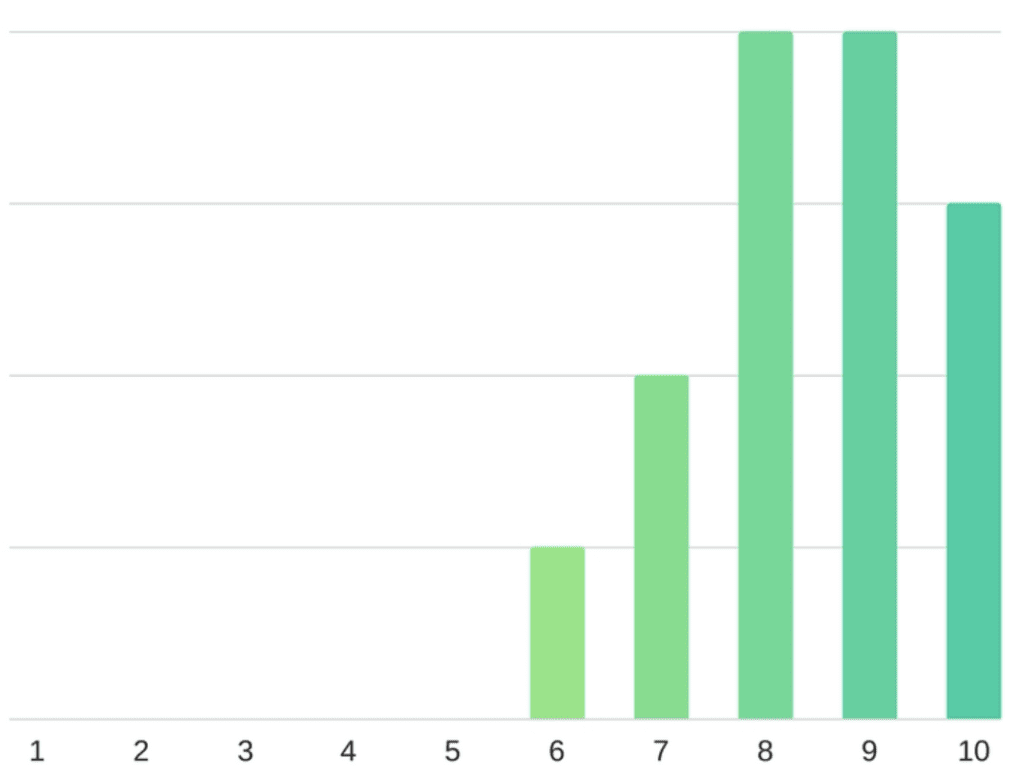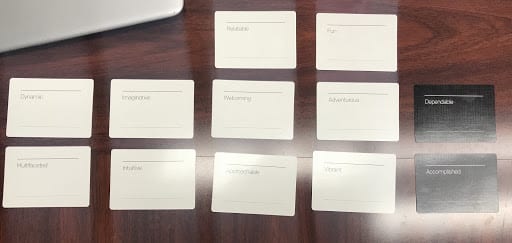Developing a Brand Narrative
When Bankers Warranty Group developed a new brand in the service contract and warranty space, they knew they had to stand out and disrupt an old school industry. The leadership team at Centricity understood the value of solidifying not only the look and feel of a brand but a brand’s voice and point of view.
Centricity needed to align its vision, develop persona-specific messaging, and create an internal guide for brand consistency and direction. Our solution? A Big Sea Wayfinding Workshop and Brand Storycrafting session.
Having worked closely with Centricity’s internal marketing team on the first iteration of their website, we were familiar with the company and its great people. They were familiar with our strategic approach. A foundation of trust opened the door to honest, candid conversations — our favorite building block to a successful engagement.

How to Develop a Brand Narrative in 5 Steps
Step 1. Meet the stakeholders
After sending our Deep Dive survey to the leadership team and an additional data-driven survey to a larger group of Centricity team members, we spent a half day conducting stakeholder interviews.
Five unique conversations revealed insights into the brand we would put into sharp focus. A few things rose to the surface right away:
- These people are magnetic, friendly, and genuine.
- They care deeply about their teams and the services they provide to their clients — and even more importantly, to their clients’ customers.
There’s nothing like walking away from a day of interviews feeling like you could spend another week listening to what those smart, friendly people have to say. We knew brand materials and direction would have to capture that level of passion and engagement at every touchpoint.
Step 2. Review the data
In order to develop a brand’s core messaging and voice, we have to set our own feelings aside. Sure, we were drawn to the Centricity team and what they had to say, but we also gathered data by reaching out to a wider pool.
Employees were reasonably confident in their ability to communicate Centricity’s mission.
On a scale of 1 to 10, how confidently can you communicate Centricity’s mission:

But this was a bit of a trick question. While Centricity had a solid mission statement, it was in need of refinement to reflect an evolving, growing brand.
The wider group showed us that our initial impressions of the brand via the stakeholders were on point, and that Centricity was already doing a good job aligning its people to what were clearly two core values.
What makes Centricity better than its competitors?

We opened the floor for stakeholders and the larger pool of employees to share adjectives that represented Centricity. The resulting word cloud showed some overlap on a few adjectives but also gave us insight into the need for a cohesive message and alignment around what Centricity wanted to convey and how they wanted to be perceived.

Layering the word cloud next to the six individual elevator pitches we were given by the leadership team and stakeholders gave us further clarity into the recurring theme of valuing customer relationships and innovating in a stagnant industry.
Step 3. Workshop it
Armed with our research and a full agenda of exercises and activities, we arrived at the Centricity headquarters bright and early. Our Wayfinding Workshops are collaborative, creative engagements that rely on the shared perspectives and energy of everyone around the table. Centricity brought seven members of its leadership and marketing teams. We brought our CMO, Content Director, Account Manager, Marketing Strategist, and Lead Designer.
We also brought Post-it notes, sharpies, and a lot of candy.
For the first half of the day, we followed our Wayfinding Workshop process and identified Centricity’s buyer personas and their pain points.
Customer pain points provide a solid foundation for content marketing. Even before you’ve identified long tail keywords you want to rank for, you can begin developing content strategies around the problems that trigger customers to start looking for a solution.
For each persona we’d identified and fleshed out, the Centricity team shared pain points on Post-it notes and, together, we grouped them into common themes.
Digging into personas, their pain points, and how Centricity offers solutions to those pain points transitioned us into journey mapping. We identified the buyer’s journey for each persona, and aligned touchpoints, behaviors, and content to each stage.
Then we had lunch.
This is a critical component of a successful all-day workshop. In all seriousness, breaking to chat and eat enhances camaraderie, establishes belonging cues among the group, and promotes effective collaboration.
Step 4. Craft the narrative
For the second half of our workshop, we shared our survey and interview research, and dove right into the fun part: activities.
These aren’t old-fashioned icebreakers, they’re tried and true exercises in identifying the narrative that drives a brand. From roleplay to personifying Centricity (and then asking that personification to get drunk at a cocktail party), engaging activities drove deep conversations around the identity and personality of the brand.

Card sorting identified how Centricity wanted to be perceived. Knowing how you want people to describe you guides how you behave and the promises you make. The team sorted over a hundred adjectives into yes and no piles. Then, together, we consolidated synonyms and adjective families until we narrowed it down to the top contenders.
Those adjectives served as the jumping off point to develop voice and tone guidelines. These guidelines provide anyone speaking on Centricity’s behalf with a litmus test to ensure that all communications are on brand. Everyone from a customer service rep to a sales leader can check written and verbal communication against the guide.
To wrap up, we workshopped a rough draft of a new mission statement. After a full day together, the stakeholders around the table felt confident taking a stab at what would become the early stages of a finalized mission statement.
Step 5. Develop a roadmap for the future
Energized by the workshops and conversations, our team dove right into two deliverables:
- A brand messaging guide document with key positioning statements, voice and tone guidelines, core values, and an updated mission statement.
- A marketing blueprint to guide Centricity’s internal marketing team on inbound marketing strategies and tactics.
We broke the blueprint up into must-haves and nice-to-haves, giving the team the ability to set aside realistic resources in the short term, scale up resources in the long term, or outsource as needed. The brand messaging guide was an ongoing process — which we expected and welcomed. The guide, meant to be shared internally, details communication styles and major value propositions.
After several rounds of revisions and workshopping in small teams, we finalized Centricity’s revised mission statement.
Centricity cultivates confidence by protecting the products you rely on. In a complicated world, we bring a human touch to service contracts and new home warranties.
Inspired by our core values mural, the Centricity team asked us to create an art piece with it. There’s nothing as satisfying as wrapping up deliverables that excite a client so much they want to hang them on the wall.
In the months since our Wayfinding Workshop, Centricity has consistently received feedback that they’re a refreshing, innovative presence in the retail warranty and service contract industry. From the decor of their headquarters to their unique speaking presence at top industry conferences, Centricity has carried their core mission and personality through to various audiences at every touchpoint.
In a high-growth year with big things on the horizon, they now have a critical internal document that will standardize positioning while remaining flexible enough to continue innovating. That’s what we call making waves.
